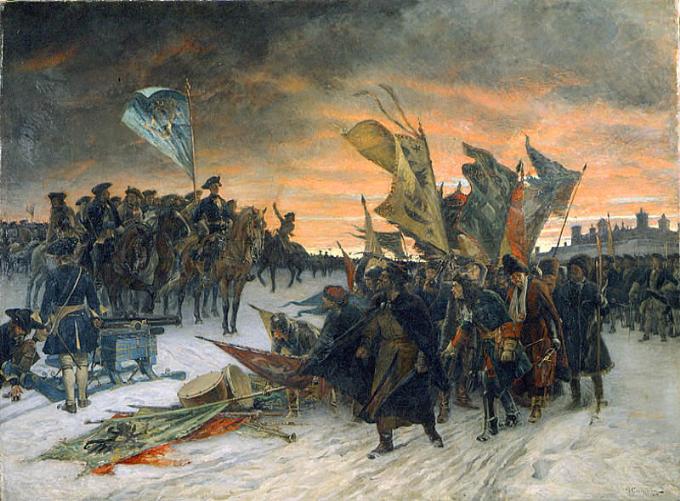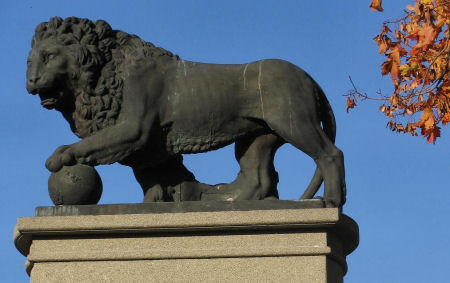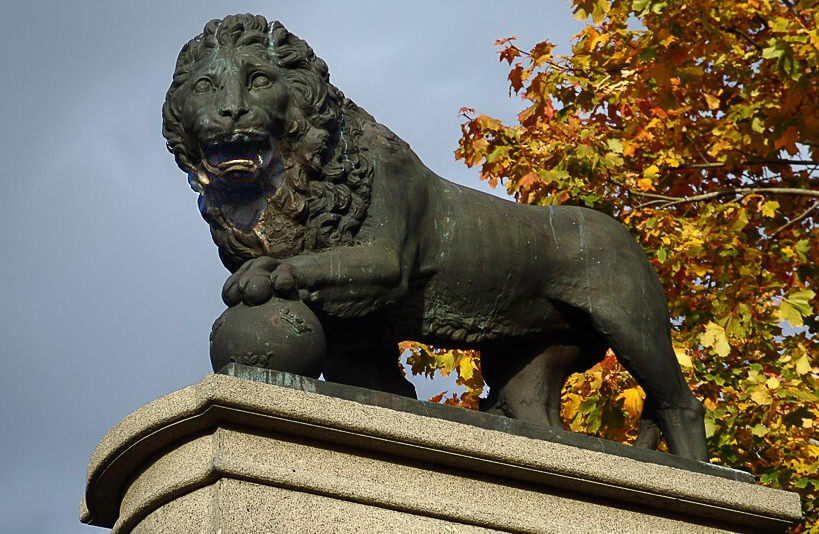November 20 In Swedish History
1700: The Swedes defeat the Russians at the Battle of Narva, a victory memorialized through a new monument as late as in the year 2000.
-
 One of the greatest victories in Swedish history of war took place on November 20, 1700: The Battle of Narva. Today, Narva is the third largest city in Estonia. “Segern vid Narva” (Victory at Narva) is a painting by Gustaf Cederström.
One of the greatest victories in Swedish history of war took place on November 20, 1700: The Battle of Narva. Today, Narva is the third largest city in Estonia. “Segern vid Narva” (Victory at Narva) is a painting by Gustaf Cederström. -
-
November 20 In Swedish History
1700: The Swedes defeat the Russians at the Battle of Narva, an early battle in the Great Northern War (det stora nordiska kriget). It is one of the greatest victories in the Swedish history of wars, as the Swedish army defeated a Russian siege force three times its size. The Swedish army under Karl XII had forced Denmark-Norway to sign the Treaty of Travendal. Now, Karl XII (or Charles XII) turned south to expel August the Strong from Livonia (which at the time consisted of the greater parts of what is today Latvia and Estonia) and Poland-Lithuania. -
 On November 20 in 2000, the Swedish Minister for Foreign Affairs, Lena Hjelm Wallén, inaugurated a new memorial/monument to celebrate the Swedish victory. It is in the shape of a Swedish lion standing on a pedestal of granite and bears the Latin inscription: “MDCC (1700) Svecia Memor" (Sweden Remembers).
On November 20 in 2000, the Swedish Minister for Foreign Affairs, Lena Hjelm Wallén, inaugurated a new memorial/monument to celebrate the Swedish victory. It is in the shape of a Swedish lion standing on a pedestal of granite and bears the Latin inscription: “MDCC (1700) Svecia Memor" (Sweden Remembers). -
-
The Swedish king positioned his 8,000 men (another 2,500 men were garrisoned in the city and would also take part in the battle at a later stage) opposite the besieging Russian army of about 34,000 to 40,000 troops, and he personally commanded them, assisted by General Carl Gustav Rehnskiöld. The Russians were led by Tsar Peter and Charles Eugène de Croy. For much of the day, a blizzard engulfed both armies, making attacks impossible. However, at midday, the winds changed and the snowstorm blew directly into the eyes of the Russians.
-
 The Swedish Lion monument in Narva, inaugurated 2000.
The Swedish Lion monument in Narva, inaugurated 2000. -
King Karl XII saw his opportunity and advanced on the Russian army under cover of the weather. The Swedes attacked in two columns, quickly broke through the Russian lines cutting them in three, and rounded them up. At one crucial point, a bridge over the Narova river collapsed under retreating Russian troops: The stampede led to the overall losses of 6,000–18,000 dead Russians, depending on sources.The remains surrendered. Peter the Great took Narva in a second battle in 1704.
-
-
